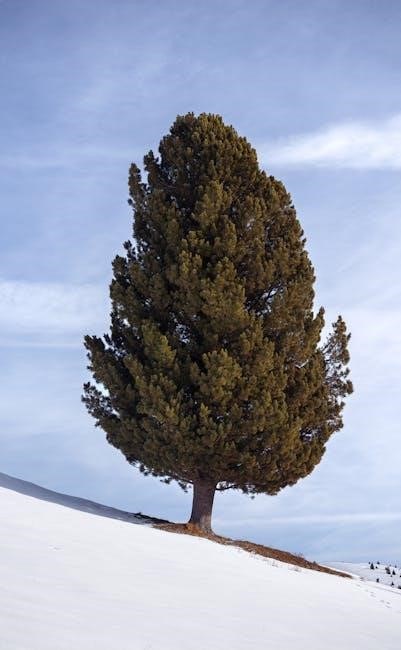
crystal growing experimental kit instructions
Creative and educational, crystal growing kits provide materials to grow colorful crystals through chemical solutions. Perfect for families, they combine science and fun, fostering curiosity and learning.
1.1 Overview of the Kit and Its Components
A crystal growing kit typically includes a crystal powder, a growing vessel, a seed crystal, and detailed instructions. Some kits also provide food coloring, stirrers, and multiple containers for experimenting with different crystal formations. The components are designed to create a supersaturated solution, essential for crystal growth. Kits vary in complexity, catering to both children and advanced users, with some offering additional tools like thermometers or molds for shaped crystals. They often emphasize safety and educational value, making them ideal for science enthusiasts of all ages.
1.2 Safety Precautions and Recommended Age
Crystal growing kits require adult supervision, especially for children under 10, as they involve handling chemicals and hot water. Avoid direct contact with crystal powders or solutions to prevent skin or eye irritation. Wear protective gloves and eyewear if provided. Kits are generally recommended for ages 8 and above, ensuring safe and responsible experimentation. Always follow the instructions carefully to avoid accidents and ensure a safe, enjoyable crystal-growing experience for all participants.
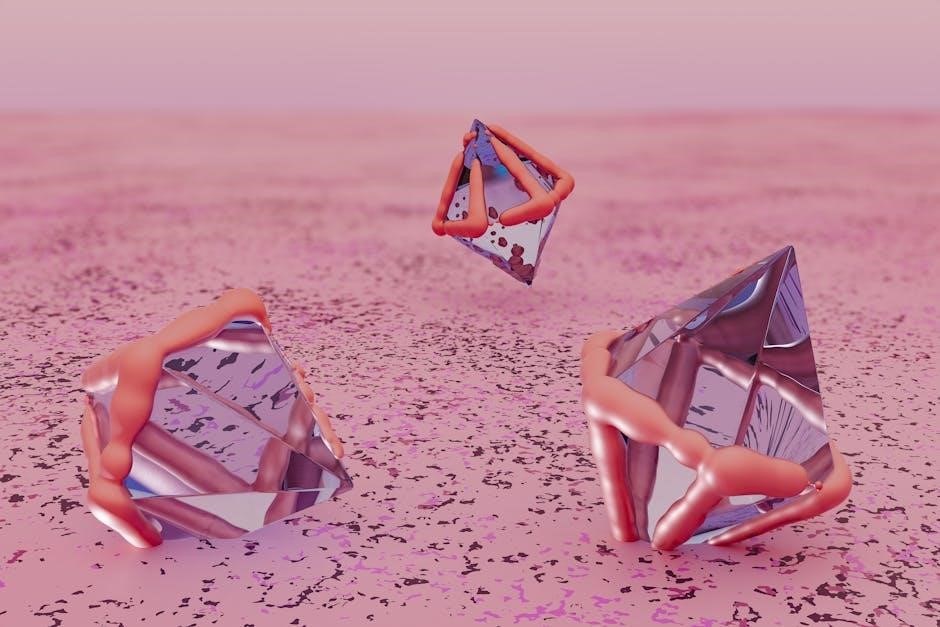
Preparing the Crystal Growing Solution
Dissolve the crystal powder in boiling water to create a supersaturated solution. Measure accurately and stir thoroughly to ensure complete dissolution for optimal crystal growth conditions.
2.1 Measuring and Dissolving the Crystal Powder
Accurately measure the crystal powder using the provided scoop or a digital scale. Gradually add the powder to boiling water, stirring constantly to prevent lumps. Ensure the mixture dissolves completely to create a supersaturated solution. Avoid using aluminum containers, as they may react with the solution. Stir for about 10 minutes until the powder is fully dissolved. Allow the solution to cool slightly before pouring it into the growth chamber for crystal formation to begin.
2.2 Heating the Water to Optimal Temperature
Begin by boiling 200ml of water to ensure optimal dissolution of the crystal powder. Avoid using aluminum containers, as they can react with the solution. Once boiling, reduce the heat to maintain a steady temperature. Do not let the solution overheat, as this can reduce crystal growth effectiveness. Allow the solution to cool slightly before adding it to the growth chamber. This step ensures the solution is supersaturated and ready for crystal formation to begin. Patience is key for successful crystal growth.
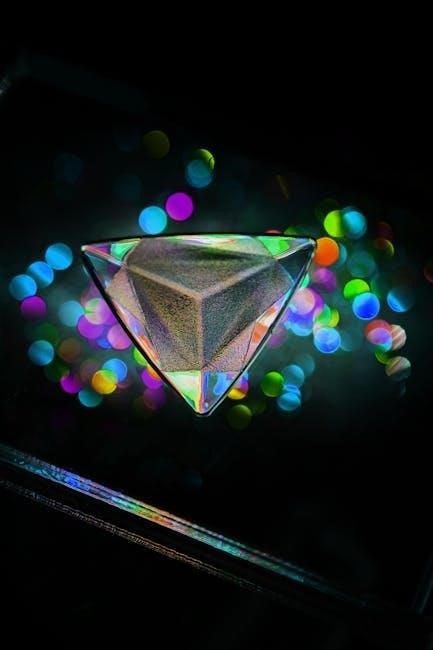
Setting Up the Growth Chamber
Place the prepared solution in a clear glass container, ensuring it is stable and undisturbed. Cover it to prevent contamination and promote ideal growth conditions.
3.1 Choosing the Right Container for Crystal Growth
Select a clean, clear glass or plastic container with a wide mouth to allow easy observation. Avoid metal containers, as they may react with the solution. Ensure the container is dry and free of contaminants before use. A lid can help prevent dust from entering while allowing airflow. Choose a container that fits the size of your crystal growth project, ensuring enough space for the solution to circulate around the seed crystal. Proper container selection is essential for optimal crystal formation.
3.2 Preventing Contamination and Ensuring Stability
To prevent contamination, ensure all tools and the container are thoroughly cleaned with warm water before use. Avoid touching the crystal seed or solution with bare hands, as oils from skin can disrupt growth. Cover the container with a lid or plastic wrap to keep dust out, but allow airflow for evaporation. Place the setup in a stable, undisturbed location to avoid vibrations. Regularly monitor the environment to maintain consistent conditions, ensuring optimal crystal growth without interference.
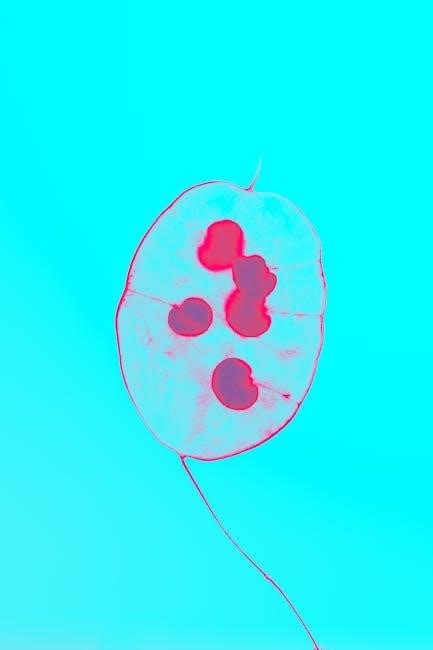
Initiating Crystal Growth
Dissolve the crystal powder in boiling water to create a supersaturated solution. Gently place the seed crystal into the solution, ensuring it doesn’t touch the container. Cover and wait.
4.1 Placing the Seed Crystal in the Solution
Gently place the seed crystal into the prepared solution, ensuring it does not touch the sides or bottom of the container. This prevents improper crystal formation. Cover the container to reduce contamination risk and allow the solution to cool slowly. Avoid disturbing the setup, as this can disrupt the crystallization process. Patience is key, as crystal growth typically begins within 12–24 hours and continues over several days.
4.2 Allowing the Solution to Cool and Form Crystals
Once the seed crystal is placed, cover the container to minimize contamination and let the solution cool slowly at room temperature. Avoid disturbing the setup, as this can disrupt crystal formation. The solution will begin to set and form crystals within 12–24 hours. For larger, well-formed crystals, allow the process to continue undisturbed for several days or up to a week. Patience is crucial, as rushing the process may result in smaller or less stable crystals.
Monitoring and Observing Crystal Formation
Regularly observe the crystal’s growth and document changes. Note the size, shape, and color. This helps track progress and ensures optimal conditions for crystal development.
5.1 Understanding the Supersaturation Process
Supersaturation occurs when a solution holds more dissolved particles than it can at a given temperature. As the solution cools, particles can no longer remain dissolved, forming crystals. Monitoring temperature and concentration helps maintain this state, crucial for crystal growth. Document observations to understand how conditions influence crystal formation. Proper supersaturation leads to larger, stable crystals, making it essential for successful experiments.
5.2 Documenting Changes and Growth Patterns
Documenting changes and growth patterns is crucial for understanding the crystal formation process. Take photos or notes daily to track the crystals’ development. Record observations like size, shape, and color changes. Measure and note the solution’s clarity and temperature. This data helps identify patterns and optimal conditions for growth. Analyzing these records can reveal how environmental factors influence crystal formation. Regular documentation enhances learning and provides insights for future experiments, making it a valuable part of the crystal-growing experience.
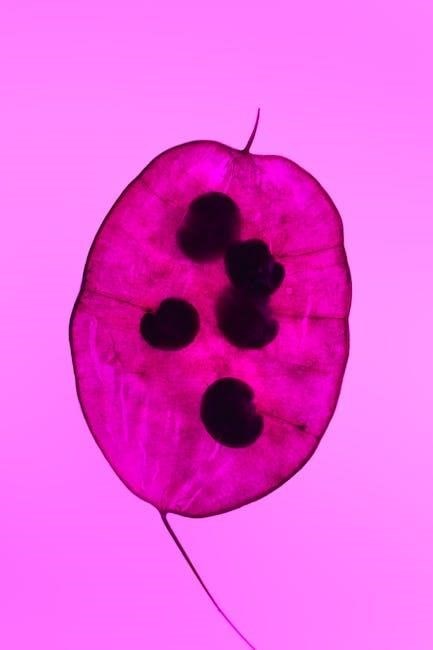
Nurturing Crystal Growth
Keep the solution stable and undisturbed to promote steady growth. Avoid vibrations and maintain consistent temperature and humidity levels for optimal crystal development and clarity over time.
6.1 Maintaining the Ideal Environment for Growth
To ensure optimal crystal growth, maintain a stable and undisturbed environment. Keep the growth chamber away from direct sunlight, vibrations, and drafts. Consistent temperature and humidity levels are crucial; slight fluctuations can disrupt the process. Avoid touching or moving the container, as this may introduce contaminants or disturb the forming crystals. Monitor the setup regularly but gently to prevent interference. A calm, steady environment fosters larger, clearer crystals over time.
6.2 Avoiding Disturbances During the Process
Maintaining stability is critical for crystal growth. Place the growth chamber in a quiet, vibration-free area, away from drafts and direct sunlight. Avoid touching or moving the container, as even slight disturbances can disrupt crystal formation. Keep children and pets away to prevent accidental interference. Vibrations from appliances or footsteps can also hinder growth. Ensuring the setup remains undisturbed allows the crystals to develop evenly and achieve their full potential without structural disruptions.
Harvesting and Displaying Your Crystals
Gently remove crystals from the solution using tweezers. Rinse with distilled water, then dry thoroughly. Display them in a clean, dry place, avoiding direct sunlight.
7.1 Carefully Removing the Crystals from the Solution
To remove crystals, gently lift them with clean tweezers, avoiding sudden movements. Rinse with distilled water to remove residue. Pat dry with a soft cloth to prevent damage. Handle with care to maintain their structure and clarity. This step ensures crystals remain intact for display or further study. Proper handling preserves their beauty and scientific value. Always store them in a dry, stable environment to maintain quality.
7.2 Drying and Preserving the Crystals for Display
Gently pat crystals dry with a soft cloth to remove excess moisture. Place them on a paper towel or clean surface to air-dry completely. Avoid direct sunlight to prevent damage. For long-term preservation, store crystals in airtight containers or sealed plastic bags to protect from humidity. Handle crystals carefully by their base to avoid breaking. For display, mount them on a sturdy surface or use adhesive specifically designed for delicate materials. Proper preservation ensures your crystals remain vibrant and intact for years.

